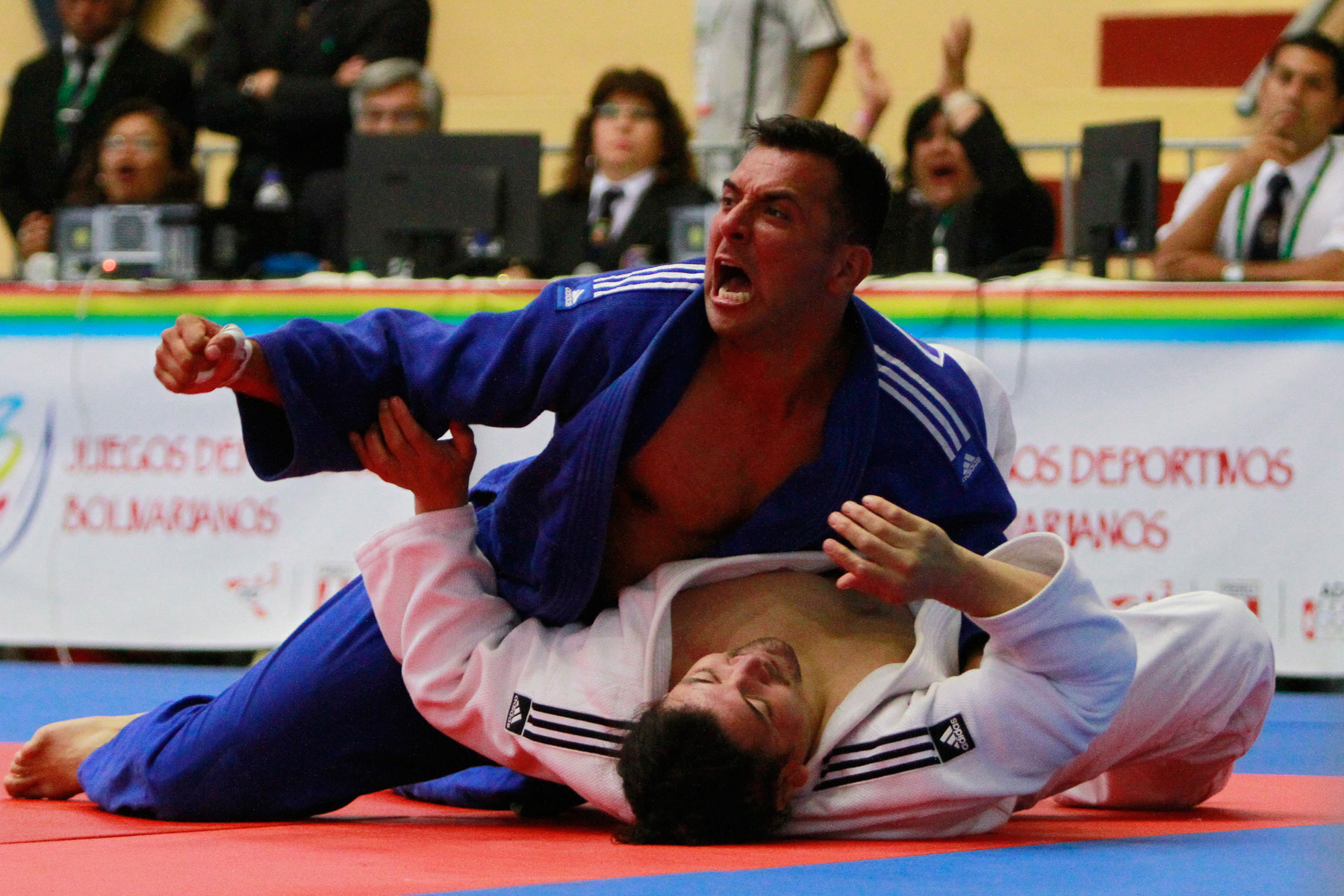
With the Olympics coming up, athletes will talk a lot about how they hope to do their best, rely on their training, and engage their fellow medal contenders in some intense, but friendly competition.
That’s all bunk. In a study conducted by researchers at San Francisco State University, it turns out that athletes’ first reaction after victory is to strut. Or at least the modern version of it, which includes throwing their hands up in the air, puffing out their chest and pulling their head back, all while wearing an enormous grin of satisfaction on their faces.
Those are contemporary signs of dominance, says the study’s author, David Matsumoto, a professor of psychology at the university who began studying the phenomenon after noticing it during his years as the U.S. Olympic coach for judo. While some have labeled the behavior as signs of pride, Matsumoto believes otherwise. “What I saw everyday in training and in competition had nothing to do with pride,” he says. “It’s all about just having clobbered somebody. It’s a sign or signal given to other members of the community who are watching.”
The more he observed and thought about the reaction, the more Matsumoto became convinced that it was based on a need to express triumph, and dominance – and that it was something instinctive, that athletes weren’t even aware of conscious of doing.
To find out, he and his colleagues decided to study video of Olympic judo medal matches and zeroed in on the athletes’ very first reactions after the match was over. They studied more than 35 athletes from different countries, including congenitally blind competitors in the Paralympics. And in their report published in the journal Motivation and Emotion, they found that victors consistently engaged in any of a number of dominance behaviors, including throwing their hands up, expanding their chests, shouting, making fists, or pumping the air. The losers in the matches never exhibited such reactions, instead keeping their heads down and averting their gaze from those nearby.
From his previous work Matsumoto coded these behaviors as expressing dominance rather than pride (since pride tended to be more reflective) occur at least a few seconds after the victory, and involve more gentle and internally directed behaviors.
“In any competition, once the competition starts, athletes are in the zone. In judo, all their thinking is about winning the match,” he says. “They are not thinking about their country, or how they overcame injuries or about their love for their brother or sister. Once it ends, a few seconds later, that stuff comes into play. But when you look at the first reaction, what you get are triumphant behaviors.”
Animal studies support that theory. Studies show that immediately after antagonistic encounters, the victor struts, enlarges its body and growls or exhibits other aggressive behaviors, likely to signal that he is the dominant figure and worthy of the group’s respect.
Even human studies suggest the same thing. In an earlier study also involving Olympic judo athletes published last year, Matsumoto and his colleagues showed cultural differences in how extensive the displays of dominance were. By correlating the number of dominance behaviors to something called the Power Distance – a standard measure of how hierarchical societies are – they revealed that athletes from countries where social hierarchies were more important tended to engage in more dominance behaviors, while those from countries that were more egalitarian displayed fewer.
Bolstering the idea that such behaviors are instinctive and not learned, Matsumoto also documented the same effect among Paralympic athletes who were born blind, and therefore never had the opportunity to observe the dominance displays. “This is a phenomenon that is occurring in people all around the world, in people who are blind and never saw it happen,” he says. “There is something wired in us to do that at that particular moment.”
Why would such dominance displays remain part of our behavioral armamentarium, emerging even during encounters when lives and food and other life-dependent factors are not at stake? “It raises interesting questions about the history of sports in general,” says Matsumoto. “They are rarified forms of competition, and there is something very basic and primal about sports that lends itself nicely to these reactions and keeps them alive.”
And as sportsmanlike as Olympic competition is today, with athletes from around the world meeting under the principles of fair play and friendly rivalry, you can bet that you’ll see a lot of victory stances come February. The athletes, it turns out, just can’t help themselves.
More Must-Reads From TIME
- The 100 Most Influential People of 2024
- The Revolution of Yulia Navalnaya
- 6 Compliments That Land Every Time
- What's the Deal With the Bitcoin Halving?
- If You're Dating Right Now , You're Brave: Column
- The AI That Could Heal a Divided Internet
- Fallout Is a Brilliant Model for the Future of Video Game Adaptations
- Want Weekly Recs on What to Watch, Read, and More? Sign Up for Worth Your Time
Contact us at letters@time.com